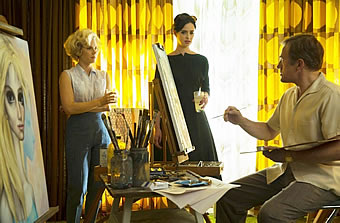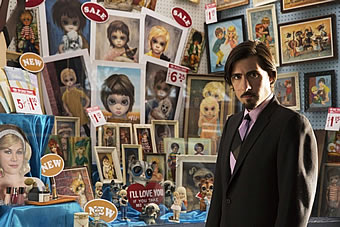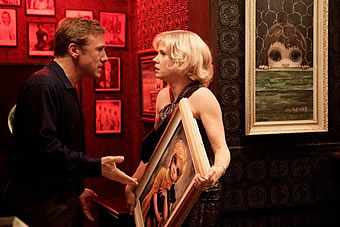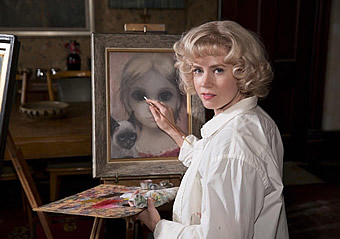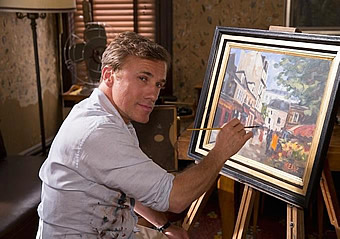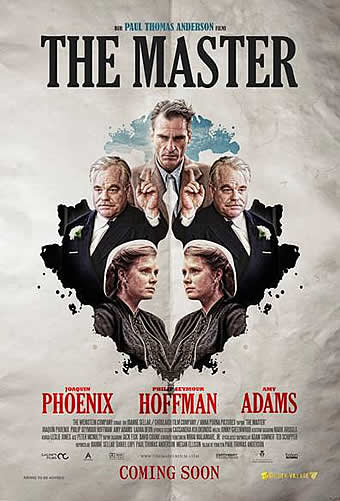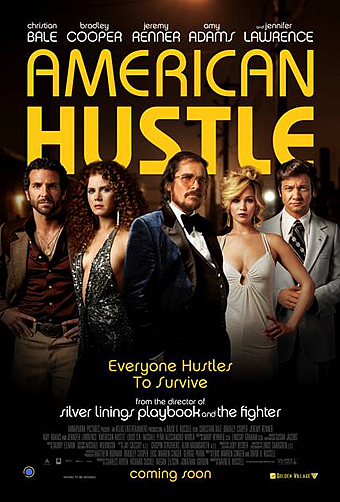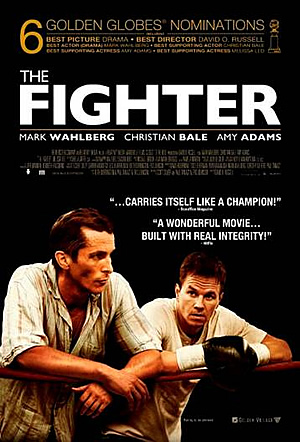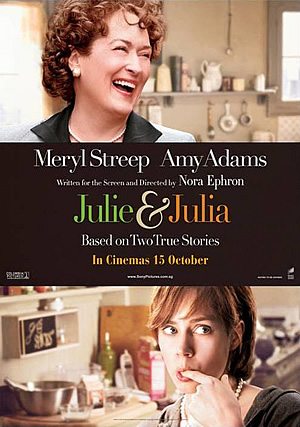BIG EYES (2014)
Genre: Drama
Director: Tim Burton
Cast: Christoph Waltz, Amy Adams, Krysten Ritter, Jason Schwartzman, Danny Huston, Terence Stamp
Runtime: 1 hr 46 mins
Rating: PG13 (Brief Coarse Language)
Released By: Golden Village Pictures
Official Website: http://bigeyesfilm.com
Opening Day: 29 January 2015
Synopsis: A drama centred on the awakening of the painter Margaret Keane (Amy Adams), her phenomenal success in the 1950s, and the subsequent legal difficulties she had with her husband (Christoph Waltz), who claimed credit for her works in the 1960s.
Movie Review:
Directed by Tim Burton, ‘Big Eyes’ depicts Margaret Keane’s (Amy Adams) second marriage to Walter Keane (Christoph Waltz), who guilt-tripped, coierced and sweet-talked Margaret into being his personal ‘big eyed waifs’ production house while he basked in the success of the paintings.
When directors with a distinct style come out with a new film, their reputation can be a blessing and a curse. This is somewhat true of Tim Burton’s ‘Big Eyes’, when audiences expect a Burton-esque treatment of the film (Johnny Depp, Helena Boneham Carter, a preference for the quirky and odd…), but leave the cinema feeling like it was not as dark as Edward Scissorhands, not as whimsical as the Corpse Bride, nor as sensory overload as Charlie and the Chocolate Factory. That is not to say that the film does not have Burton’s personal touches over it (the pastel colours and big eyes – I was reminded by a friend who is more well-versed in Tim Burton’s movies), but it simply does not scream Tim Burton.
That is not a bad thing, however, as without Burton’s signature touches, the story comes out stronger, with brilliant performances from Adams and Waltz (more about that later). Burton is a longtime collector of Margaret Keane’s works, having commissioned portraits of his then-girlfriend, Lisa Marie, and then-domestic partner, Helena Boneham Carter. This personal connection with Margaret Keane might have made him more sympathetic towards the character of the film. Throughout the film, Margaret Keave was depicted as the victim – the painter without recognition, but only painted behind a locked door – garnering the sympathy and support of the audience. While the film did acknowledge that it was through her tacit permission did Walter Keane steal credit, Margaret Keane was ultimately portrayed as helpless and manipulated.
And what a good flirt, shrewd businessman, chronic liar and borderline schizo Waltz’s portrayal of Walter Keane was. Waltz was too smooth, too suave and too ‘tortured artist’ for the audience to be entirely comfortable with, especially with the speed he romances and proposes to Margaret. The speed of their courtship does make one wonder if he was already eyeing her talent when he first approached her, or was it a happy coincidence (for him)? Either way, Waltz’s Walter Keane’s slow corruption by power and money kept audiences guessing and anticipating the next despicable action, making him all the better to hate.
Adams also shone as Margaret Keane, winning her the Golden Globe for Best Actress in a Motion Picture – Musical or Comedy. Adams changed from the wide-eyed innocent in San Francisco, to the confident woman in the courthouse in Honolulu. While the change seemed abrupt, it was a relief that Margaret Keane finally stood up for herself.
It might not have been on purpose, but the film also felt like an attack on the mass production of art pieces, questioning what exactly is art? To the shrewd businessman Walter Keane, art was profit, and it did not matter who bought the art piece, and in what form, as long as it made money. I guess all of us who ever bought postcards of the reproductions of famous art pieces are guilty of perpetuating that practice. The oppositing point of view was then juxtaposed by Margaret Keane, where art is a connection between the artist and the viewer, as well as a carthesis of sorts. When the artist is forced to paint for the sake of profit, art becomes soulless. No matter whose side you stand on, the film is a fascinating take on the world of art (snobby minimalist art gallery owners included).
Part biolography and part critique on the state of art (or at least, it seemed so), ‘Big Eyes’ shines due to the performances from Adams and Waltz. Fans of Burton-esque movies, though, might be disappointed by the relatively vanilla treatment of the film, which sticks to the realistic telling of Margaret’s Keane’s life, and stays relatively clear of the quirks and strangeness that audiences are accustomed to in Tim Burton’s films, except for the big eyes.
Movie Rating:




(The film allows the viewer to peer through the eyes of Margaret Keane in the 1950s-1960s, the windows of her soul-crushing period of time before her court triumph)
Review by Goh Yan Hui
You might also like:
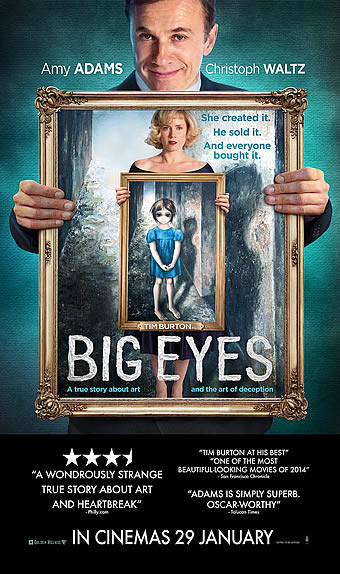
Movie Stills
